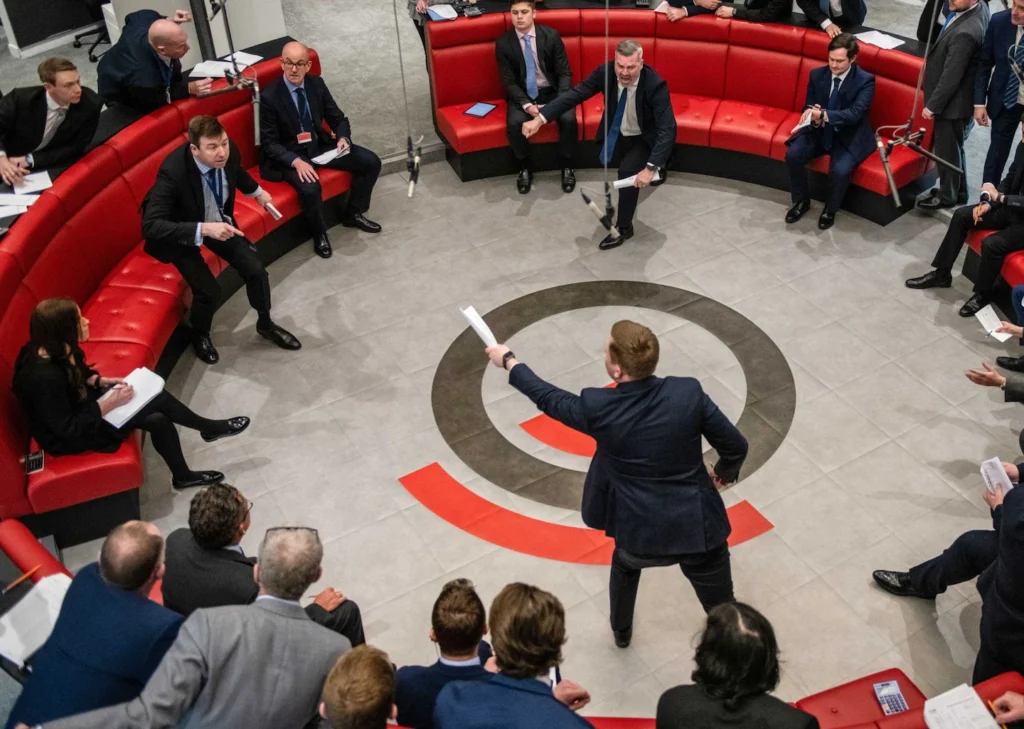
1. Why such focus on the LME?
It sets global reference prices for critical metals such as copper and aluminum, trading about $60 billion in futures contracts daily, or more than half of the world total. History dates it back to the early 19th century, when traders gathered around a circle drawn in the sawdust on the floor of the Jerusalem Coffee House in the City of London. Today, in addition to its electronic market, the LME is one of the last exchanges with an open-outcry trading floor, known as “the Ring,” where brokers yell orders at one another. It brings together mining companies, which use the LME to offset price risks, and hedge funds, which use it to speculate. Contracts are backed by physical metal kept in a network of LME warehouses around the world, which maintains a direct link with the real-world industry. In 2012, the LME was purchased by Hong Kong Exchanges and Clearing Ltd.
Nickel’s price spiked 250% in a little more than 24 hours, prompting the exchange to suspend trading on March 8. The seeds of the crisis had been planted by a Chinese tycoon, Xiang Guangda and his closely-held enterprise Tsingshan Holding Group Co., a dominant force in the world’s nickel and stainless steel production. Tsingshan had been shorting nickel – betting that prices would fall – because Xiang expected a rapid production increase from new factories in Indonesia. Then came the Feb. 24 invasion by Russia, which exports about 5% of the world’s nickel. A price jump sparked a “short squeeze” – a term for what can happen to traders who have bet on a price falling when it rises instead. In order to stop losses, short sellers quickly buy back securities they have used to make their bets, accelerating a rise in prices.
It decided to cancel $3.9 billion in trades, effectively rewinding the market to the closing price on March 7 of $48,078 per metric ton, down from a high of more than $100,000. Matthew Chamberlain, the LME’s chief executive, said prices were “becoming disconnected” from “physical reality.” The move rescued brokers pushed to the brink by margin calls, while serving as a bailout for Tsingshan and its banks. It also wiped out huge profits of investors who held bullish bets. It wasn’t the first time the LME had stepped in. Safeguards were introduced in the wake of the 1985 “Tin Crisis,” when a cartel of producers collapsed, and after a copper trading scandal at Japanese trading house Sumitomo Corp. in 1996.
4. Why the broader impact?
Nickel trading was halted for a week to give participants – including Xiang – time to get their financing in order. When it resumed, the first three days produced short sessions hampered by technical glitches and a newly imposed 15% daily limit for price moves. Furious investors vowed to walk away from the exchange, saying it had undermined trust. Volatility and higher prices meant brokers needed more capital. Nickel trading volumes dropped, raising concern about more price swings. Paul Singer’s Elliott Investment Management launched a claim for $456 million, joined by other hedge funds seeking damages from the LME.
The crisis thrust the LME into the global spotlight, with critics ranging from the International Monetary Fund to Citadel Securities founder Ken Griffin. Nickel is the key ingredient in the stainless steel used in everyday appliances, but it’s also critical for the transition away from fossil fuels, since it’s used in the batteries automakers need to electrify the world’s car fleet. Attention soon turned to the risks hidden in opaque corners of the trade in natural resources, including the vast ecosystem of privately negotiated over-the-counter derivatives deals that skirt the LME’s clearinghouse and margin requirements. Most of the big nickel short bet had been in such deals, so the exchange didn’t grasp the scale and potential systemic risk of the position. In May, it unveiled a plan to force members to report OTC positions.
More stories like this are available on bloomberg.com

